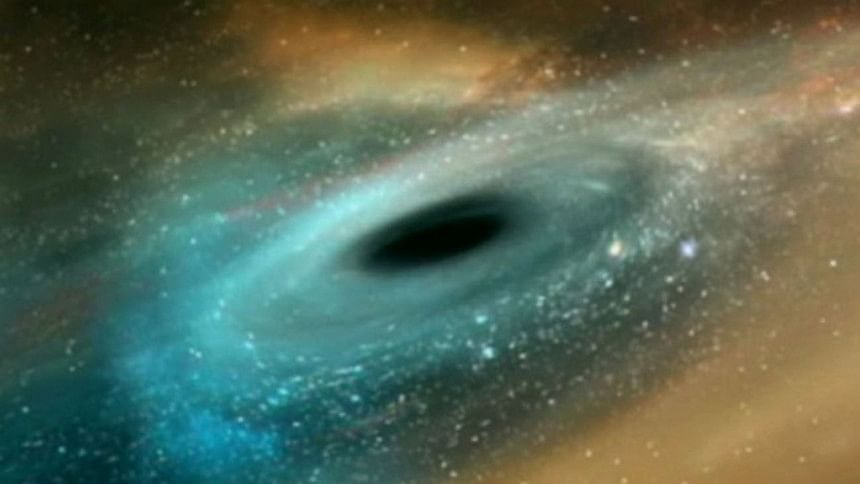Black hole seen 'playing billiards'

Astronomers have witnessed two big blobs of plasma, shot into space by a black hole, cannoning into each other in a dramatic cosmic billiard-shot.
The super massive black hole sits at the heart of the sixth brightest galaxy in our sky, blasting out a jet of plasma at 98% of the speed of light.
A fast-moving knot within that jet bore down on another, in a dazzling impact.
It was captured in a series of images snapped by the Hubble Space Telescope, spanning 20 years.
The discovery is reported in the journal Nature.
"Something like this has never been seen before in an extragalactic jet," said Dr Eileen Meyer of the Space Telescope Science Instititue (STScI) in Baltimore in the US. "This will allow us a very rare opportunity to see how the kinetic energy of the collision is dissipated into radiation."
The collision will unfold further in the coming decades, allowing scientists to continue watching it and learn more about these mysterious, spectacular jets - which can only rarely be seen in visible light.
This particular jet was spotted in Hubble images from 1992; the time-lapse movie that revealed the collision comprises four images taken from 1994 to 2014.
It appears to be a beam of highly energised plasma, propelled into space by the supermassive black hole that forms the "active nucleus" of NGC 3862 - an elliptical galaxy 260 million light-years from Earth.
Martin Hardcastle, a professor of astrophysics at the University of Hertfordshire in the UK, said it was "very nice to see" the evidence of such a collision.
"These chunks of stuff follow each other up the jet and you would expect fast ones to run into slow ones," Prof Hardcastle told the BBC.
"When that happens what you get is a hydrodynamic shock, which means that energy is transferred from blob number two, to material that used to make up blob number one. As a result, you increase the energy of the particles in the fluid… so you see a brightening effect.
"There's a lot of interpretation going into this, because even Hubble can't see this as sharply as you would like. But it's perfectly plausible that's what they're seeing."

 For all latest news, follow The Daily Star's Google News channel.
For all latest news, follow The Daily Star's Google News channel. 



Comments